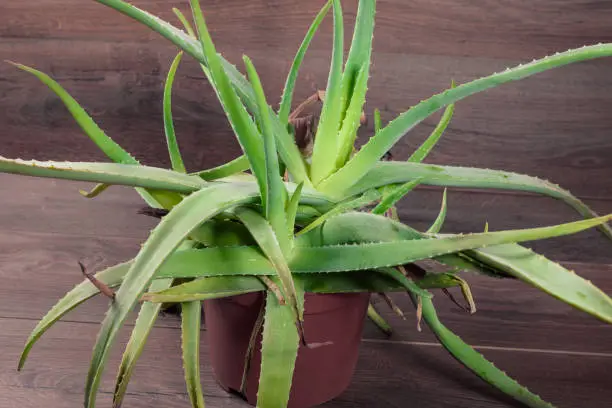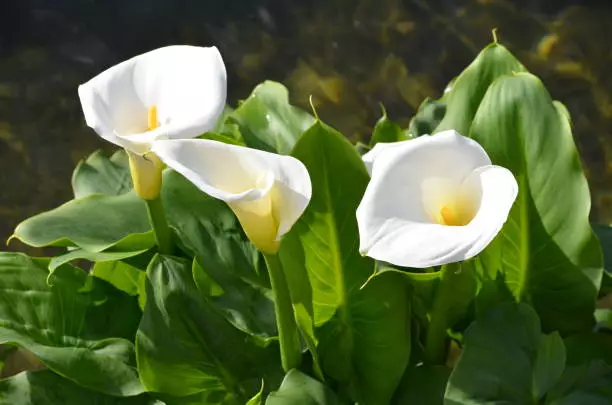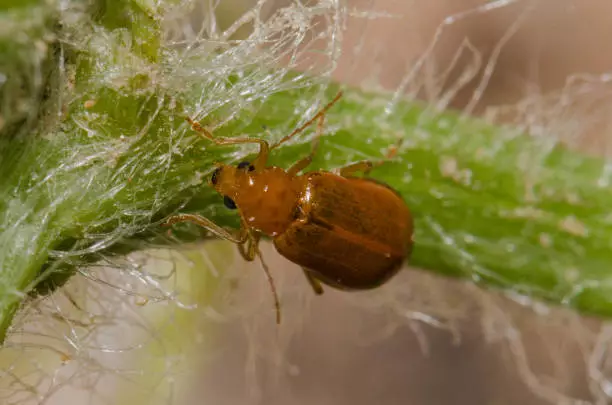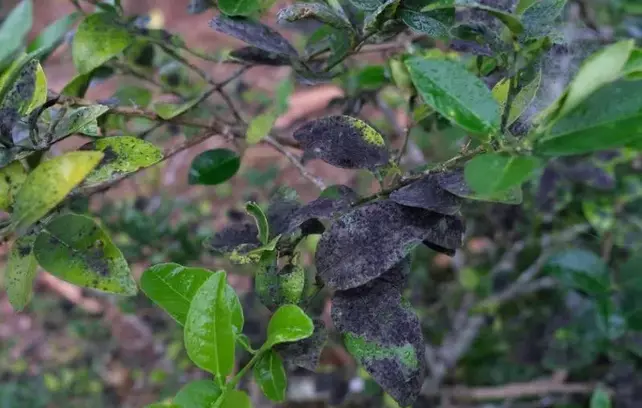Root bound photos signs are a common issue that many plant enthusiasts face. This occurs when a plant has outgrown its container and its roots become tightly packed, limiting their ability to absorb nutrients and water. As a result, the plant’s growth may be stunted, and it may suffer from various health problems.
One way to identify if a plant is root bound is to look for signs such as yellowing leaves, slow growth, and wilting. Repotting the plant into a larger container with fresh soil can help alleviate the issue and promote healthy growth. It is important to be gentle when removing the plant from its old container to avoid damaging the roots.
Understanding Root Bound Plants
Root bound plants are those that have outgrown their container and have roots that are densely packed, spiraling around the root ball, and confined within the container. This can lead to stunted growth and slow plant development.
When a plant is root bound, the roots have reached the edge of the container and have nowhere else to grow. The roots then begin to grow in a circular pattern around the edge of the container, forming a barrier that prevents the plant from absorbing nutrients and water efficiently. This can lead to a lack of oxygen and nutrients, which can cause the plant to become stressed and eventually die.
One of the signs of a root-bound plant is slow growth. If a plant is not growing as quickly as it should, it may be root-bound. Another sign is when the plant becomes pot-bound, meaning it has outgrown its container and the roots are growing out of the drainage holes.
To check if a plant is root bound, gently remove it from its container and examine the roots. If the roots are densely packed and spiraling around the root ball, the plant is root-bound.
If you discover that your plant is root-bound, it’s important to repot the plant into a larger container. When repotting, gently loosen the roots and remove any dead or damaged roots. Use a potting mix that is appropriate for your plant’s needs and water thoroughly.
In conclusion, understanding root-bound plants is important for maintaining healthy plant growth. By recognizing the signs of a root-bound plant and taking the necessary steps to repot it, you can ensure that your plants continue to thrive and develop properly.
Signs of Root Bound Pothos
A root-bound pothos plant is one that has outgrown its container, and its roots are tightly packed and circling around the root ball. Here are some signs to look out for to determine if your pothos plant is root-bound:
- Brown leaves: If you notice brown leaves on your pothos plant, it could be a sign of root binding. When the roots of a pothos plant become too crowded, they can’t absorb enough water and nutrients, which can lead to brown leaves.
- Drooping leaves: Another sign of a root-bound pothos plant is drooping leaves. When the roots can’t absorb enough water, the leaves will start to wilt and droop.
- Foliage: The foliage of a root-bound pothos plant may also look unhealthy. The leaves may be smaller than usual, and the plant may not be producing new growth.
To check if your pothos plant is root-bound, gently remove it from its container and examine the roots. If the roots are tightly packed and circling around the root ball, it’s time to repot your pothos plant.
Repotting a root-bound pothos plant can help it thrive. When you repot, gently loosen the roots and trim any that are brown or mushy. Choose a container that is one size larger than the current one, and fill it with fresh potting soil. Place the pothos plant in the new container and water thoroughly.
In summary, signs of a root-bound pothos plant include brown leaves, drooping leaves, and unhealthy foliage. Repotting can help your pothos plant thrive.
Symptoms of Root Bound Plants
Root bound plants are those whose roots have grown to fill up the entire container or pot, leading to a lack of space for further growth. This condition can negatively affect the health and vigor of the plant, leading to a range of symptoms.
One common symptom of root bound plants is wilting, which occurs due to a lack of space for the roots to absorb water and nutrients. This can be exacerbated by overwatering, as the excess water can lead to root rot and further damage to the already crowded roots.
Root rot is a common issue with root bound plants, as the compacted roots can lead to poor drainage and waterlogged soil. This can cause the roots to become mushy and brown, leading to a sickly appearance and a lack of vigor in the plant.
Nutrient deficiencies can also occur in root bound plants, as the limited space for root growth can lead to a lack of access to vital minerals and nutrients. This can manifest in a range of symptoms, including yellowing or discoloration of leaves, stunted growth, and a generally sick appearance.
In severe cases, root bound plants may even begin to tip over or exhibit signs of stress, such as wilting or drooping stems. It is important to recognize the symptoms of root bound plants early on and take steps to address the issue, such as repotting or root pruning.
Overall, it is important to provide adequate space for root growth in order to ensure the health and vitality of your plants. Keep an eye out for the symptoms of root bound plants and take action as necessary to promote healthy growth and development.
The Impact of Soil and Water on Root Bound Plants
Root bound plants are those that have outgrown their container and have roots that have become tangled and compacted. This condition can cause stress to the plant and lead to a variety of symptoms, including stunted growth, yellowing leaves, and wilting.
One of the main factors that can contribute to root bound plants is the quality of the soil. Soil that is too compacted or lacking in nutrients can make it difficult for roots to grow and expand properly. Additionally, overwatering or poor drainage can lead to soil that is too wet, which can cause roots to rot and die.
Water is also a crucial factor in the health of root bound plants. While plants require water to survive, too much or too little can cause problems. Overwatering can lead to soil that is constantly wet, which can suffocate roots and promote the growth of harmful bacteria and fungi. On the other hand, soil that dries out too quickly can cause roots to become stressed and lead to wilting and other symptoms.
To prevent root bound plants, it is important to choose the right soil and provide proper watering and drainage. Using soil that is well-draining and rich in nutrients can help promote healthy root growth, while ensuring that containers have adequate drainage holes can prevent water from becoming stagnant. Additionally, monitoring soil moisture levels and watering only when necessary can help prevent overwatering and ensure that roots receive the right amount of water.
Overall, the health of root bound plants is closely tied to the quality of the soil and water they receive. By providing the right conditions for growth, it is possible to prevent root bound plants and ensure that plants thrive and remain healthy.
Repotting as a Solution for Root Bound Plants
When a plant’s roots outgrow the pot they are in, they can become root bound. This can cause a variety of problems for the plant, including stunted growth, yellowing leaves, and even death. Repotting is the process of moving a plant to a larger container to give its roots more room to grow. Here are some key steps to follow when repotting a root bound plant:
- Choose a new pot that is one size larger than the current pot. Make sure the new pot has drainage holes to prevent water from accumulating in the bottom.
- Prepare the potting mix by mixing together equal parts of peat moss, perlite, and vermiculite. This will provide good drainage and aeration for the plant’s roots.
- Remove the plant from its current pot by gently loosening the roots. If the roots are tightly packed, you may need to use a knife to make some cuts to loosen them.
- Place the plant in the new pot and fill in the gaps with the potting mix. Make sure the plant is at the same level as it was in the previous pot.
In some cases, it may be necessary to divide the plant before repotting. This involves separating the plant into smaller sections and repotting each section in its own container. This can be done with plants that have multiple stems or clumps of roots.
Root pruning can also be a helpful technique for maintaining the health of a plant. This involves trimming back the roots to prevent them from becoming too crowded. However, it is important to only do this when absolutely necessary, as it can be stressful for the plant and may cause it to go into shock.
Overall, repotting is an effective solution for root bound plants. By providing more room for the roots to grow, you can help ensure that your plant stays healthy and vibrant. With the right potting mix and proper maintenance, your plant will thrive for years to come.
Pruning and Other Care Techniques
Pruning is an essential care technique for plants to ensure their healthy growth and survival. When a plant becomes root-bound, it can lead to a lack of nutrients and oxygen, causing stunted growth and small buds. Pruning can help to alleviate these symptoms and promote healthy root growth.
When pruning, it’s important to remove any dead or damaged leaves or stems. This will allow the plant to focus its energy on healthy growth rather than trying to repair damaged parts. It’s also important to prune any roots that are circling the container, as this can lead to root-bound photos signs. Root pruning can be done by gently loosening the soil around the roots and cutting away any circling roots.
In addition to pruning, proper maintenance is also crucial for the health of a plant. This includes providing adequate water and nutrients, as well as ensuring proper drainage. Overwatering can lead to root rot, while underwatering can cause the plant to wilt and die. It’s important to find a balance that works for the specific plant and its environment.
Regularly checking the plant for signs of stress or lack of nutrients is also important. This can include yellowing leaves, stunted growth, or wilting. If any of these symptoms are present, it may be necessary to adjust the plant’s care routine or provide additional nutrients.
Overall, with proper care and maintenance, a root-bound plant can still thrive and produce healthy growth. Pruning, root pruning, and regular maintenance are all key techniques to ensure the plant’s survival and promote healthy growth.
Root Bound Condition in Different Types of Plants
Root bound condition is a common problem that affects many different types of plants, including houseplants, indoor plants, and cannabis plants. When plants are root bound, their roots become cramped and tangled, causing them to struggle to absorb water and nutrients from the soil. This can lead to stunted growth, yellowing leaves, and other signs of stress.
One type of plant that is particularly susceptible to root bound conditions is the pothos plant. Pothos plants are popular houseplants that are known for their trailing vines and heart-shaped leaves. However, when pothos plants become root bound, they may start to exhibit signs of stress, such as wilting leaves or slowed growth.
To prevent root bound conditions in pothos plants, it is important to repot them regularly and to provide them with a well-draining soil mix that allows air to circulate around the roots. Additionally, it is important to avoid overwatering, as this can contribute to root rot and other problems.
In natural habitats, plants can also become root bound, especially when they are grown in containers or other confined spaces. When this happens, the roots may begin to wrap around themselves, forming a tight ball that can be difficult to untangle. This can lead to reduced growth and other problems, as the roots struggle to absorb water and nutrients from the soil.
Overall, it is important to be aware of the signs of root bound conditions in plants and to take steps to prevent them from occurring. By providing your plants with the right growing conditions, including proper soil, adequate water, and regular repotting, you can help them thrive and grow to their full potential.
Humans’ Role in Managing Root Bound Plants
When plants become root bound, it is essential to take action to ensure their survival and continued growth. Humans play a crucial role in managing root bound plants and can take several steps to ensure their health.
One of the most important things humans can do is to repot root bound plants. Repotting allows plants to have access to fresh soil, nutrients, and oxygen, which are all essential for their growth and survival. When repotting, it is important to choose a pot that is slightly larger than the current one, so the plant has room to grow.
In addition to repotting, humans can also prune root bound plants to encourage new growth. Pruning can help remove any dead or damaged roots, which can improve the plant’s overall health. It can also help control the size of the plant and prevent it from becoming too large for its pot.
Watering is also an essential part of managing root bound plants. When plants become root bound, they may require more frequent watering as their roots can no longer absorb enough water. However, it is important not to overwater, as this can lead to root rot and other issues.
Finally, humans can divide root bound plants to promote new growth and prevent overcrowding. This involves separating the plant into smaller sections and replanting them in new pots. This can help ensure that each plant has enough space to grow and access to the nutrients it needs.
Overall, humans play a critical role in managing root bound plants. By repotting, pruning, watering, and dividing, we can help ensure the health and growth of our plants.
Frequently Asked Questions
Do philodendrons prefer being root bound?
No, philodendrons do not prefer being root bound. While they are relatively tolerant of being root bound, they will benefit from being repotted into a larger container as they grow.
How do I know if my plant is root bound?
You can tell if your plant is root bound by examining the roots. If the roots are circling around the edge of the pot and are tightly packed, your plant is likely root bound.
What are the signs of a root bound plant?
Some signs of a root bound plant include stunted growth, yellowing leaves, and a decrease in overall health. The plant may also require more frequent watering as the roots have taken up most of the available space in the pot.
Can root bound plants be repotted?
Yes, root bound plants can be repotted. It is important to choose a pot that is only slightly larger than the current pot to avoid overpotting. Gently loosen the roots before repotting to encourage new growth.
Do snake plants suffer from being root bound?
Snake plants are tolerant of being root bound and can actually thrive in these conditions. However, they will still benefit from being repotted into a larger container as they grow.
What are the effects of leaving plants root bound?
Leaving plants root bound can lead to stunted growth, decreased overall health, and a decrease in the plant’s ability to absorb water and nutrients. It can also lead to the roots becoming tightly packed and potentially damaging the plant’s root system.



